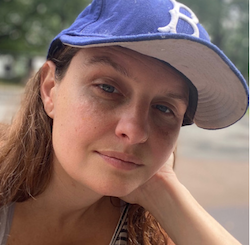How Urban Forest School Gave Us the Connections We Needed During the Pandemic
by Margaret Nell Becker
Happiness is the greatest skill we’ll ever learn… Happiness is our potential. –Katherine May, Wintering
My school building sits along the East River in New York City. If you stop to look out the windows of our hallways and classrooms, you will catch a breathtaking expanse of water and sky. You will also see an island, full of lush greenery and gigantic trees, so close to where you stand, you imagine that, weather permitting, it would be an easy swim.
This is Randall’s Island, which has been the site of our fourth/fifth grade classroom’s forest school for the past two years, since the fall of 2020. In this essay, I argue for the importance of learning in nature, for what Hooven, Kissling, and Woods (2021) call “emergent earthen curriculum” (p. 20), and show how this emergent learning lends itself to students’ creation of significance in their here and now, based on the relationships they forge with the world around them. I describe how, in the wake of pandemic school closings, my students and I developed our own urban forest school, and how two significant landmarks on Randall’s Island—Dream Tree and the Beach—became driving forces in our learning about the world, ourselves, and our community.
 Margaret Nell Becker graduated from Teachers College, Columbia University in 2010 with a master’s degree in inclusive elementary education. After teaching in a variety of New York City schools, Becker has spent the past decade as a 4th/5th grade teacher at Central Park East 2 in East Harlem, NY. In her teaching practice, Becker prioritizes bringing the world into her classroom through experiential learning that is authentic and meaningful to her students. She lives in Harlem with her partner and two children.
Margaret Nell Becker graduated from Teachers College, Columbia University in 2010 with a master’s degree in inclusive elementary education. After teaching in a variety of New York City schools, Becker has spent the past decade as a 4th/5th grade teacher at Central Park East 2 in East Harlem, NY. In her teaching practice, Becker prioritizes bringing the world into her classroom through experiential learning that is authentic and meaningful to her students. She lives in Harlem with her partner and two children.